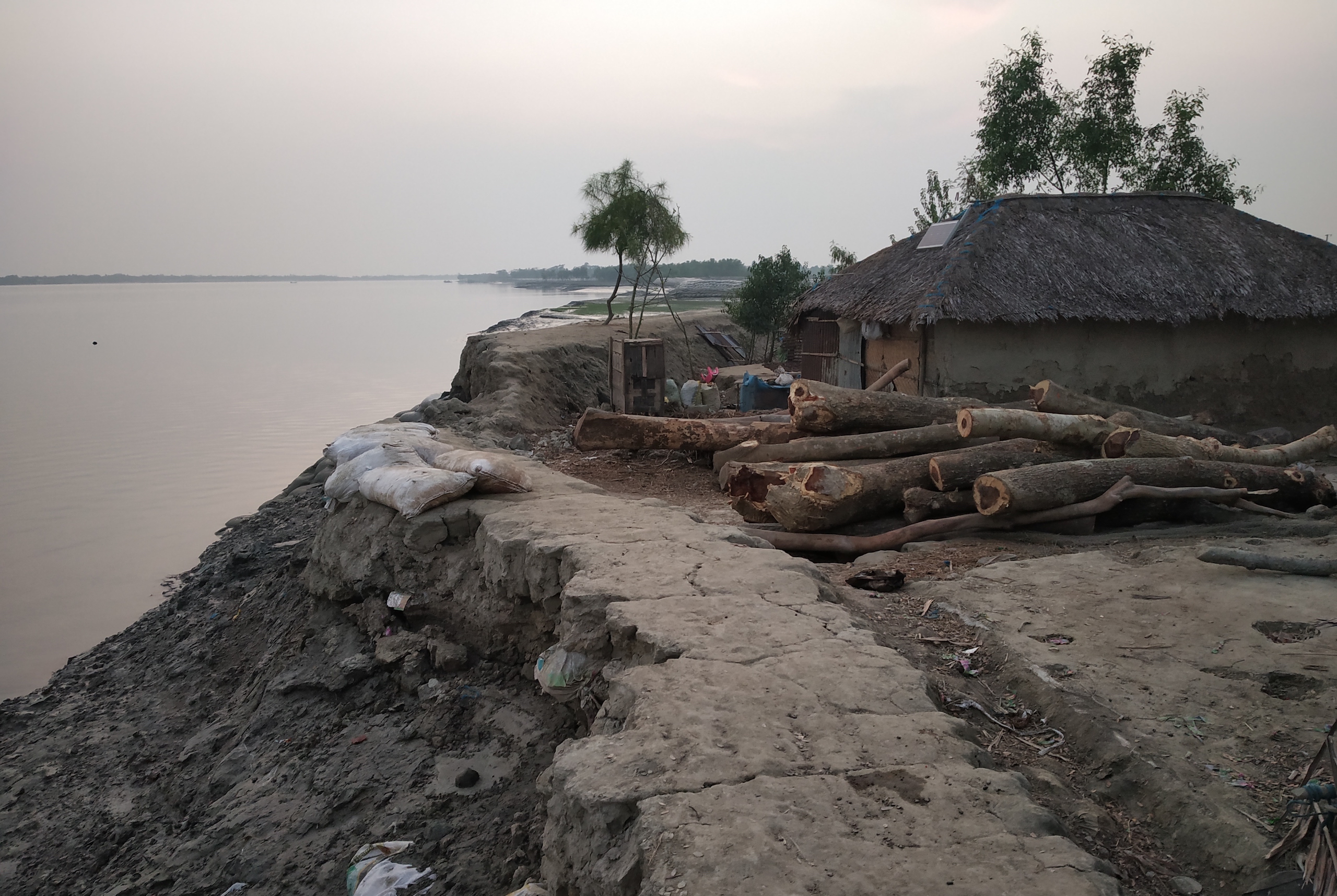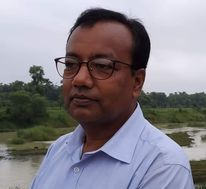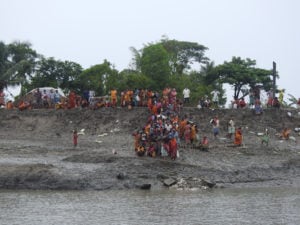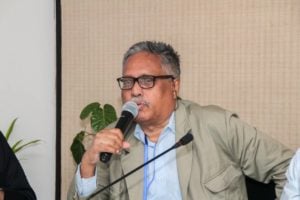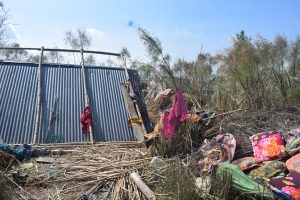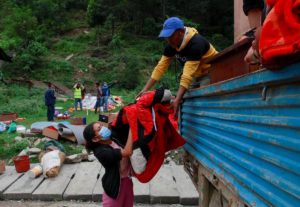Notobor Malo plants mangroves next to his home every year to halt erosion by the rising sea. Some saplings die, but some survive to protect his riverside home in Mathurapur, a village in the Satkhira district in southwestern Bangladesh.
Close to where the Arpangachhia River flows into the Bay of Bengal, saving Malo’s home is becoming more difficult as tides get higher due to the impacts of climate change. Still, he keeps trying. The world’s largest mangrove forest, the Sundarbans, is on the bank of another nearby river, the Malancha, a tributary of the Ganga. It costs Malo nothing to pick saplings there.
The government has pursued a different strategy. Thirteen coastal districts of Bangladesh have 5,810 kilometres of earthen embankments that were constructed in the 1960s as part of the coastal embankment project (CEP), which morphed into the coastal embankment improvement project (CEIP).
But cracks in the embankments are a constant problem. Worse, embankments can collapse when a big cyclone hits. The three southwestern coastal districts of Satkhira, Khulna and Bagerhat experienced serious damage to 683km of embankments during Cyclone Aila in 2009 and 478km during Cyclone Amphan in 2020.
It is not either or, it is both
Sea levels are rising due to climate change, worsening flooding and erosion in coastal areas. Policymakers, experts, civil society and development agencies have long debated the merits of constructing embankments to protect land versus planting mangroves, whose roots hold the soil together.
With funding from the World Bank, government agency the Bangladesh Water Development Board (BWDB) is now running a project worth 32.8 billion Bangladeshi taka (USD 350 million) to repair and strengthen embankments in Khulna and Barishal as part of the CEIP.
The government has also started implementing a plan to plant mangroves on riverside embankments all around the Sundarbans. A few non-governmental organisations have mangrove planting projects as well.
So, should the authorities concentrate on embankments or mangroves, or both? “Mangroves protect earthen embankments, especially in the rivers flowing through the Sundarbans,” Mahmood Hossain, the vice-chancellor of Khulna University and a mangrove researcher, told The Third Pole. “These rivers carry a lot of silt. Mangrove roots trap this silt and thus strengthen embankments. If we could plant mangroves all along the coast in a systematic manner, we would not have to spend so much on embankment repairs every year.”
“If we could grow mangroves along embankments in this entire area, they would protect settlements,” Dilip Kumar Datta, a professor of environmental science at the same university, agreed. “The Sundarbans part of the Bangladesh delta is an area of over 6,000 square kilometres that has been formed by the Ganga and its tributaries dropping silt as they reach the sea. This process was obstructed when embankments were built. The silt can’t cross the embankments, so they’re being deposited on riverbeds that are rising, while water gets stuck on the farms behind the embankments. Then the embankments are being damaged for shrimp farming and by natural calamities.”
There are over 5,000 kilometres of embankments in the coastal districts. Out of that, mangroves have been planted along 300 kilometres or so.AKM Tahmidul Islam, Bangladesh Water Development Board
Some mangrove planting has been started under the CEIP, for example along 40km of embankments in the Khulna district. The BWDB has received 50,000 saplings from the forest department to plant along embankments in the Satkhira district.
“We have done afforestation along more than 100km of embankments under the CEIP. We are planting mangroves between the embankment and the river, and other species on the other slope of the embankments,” SM Sajjad Hossain, the divisional forest officer for the social afforestation division (Bagerhat) in the forest department, told The Third Pole.
Planting lags behind
The BWDB is responsible for the control, maintenance and repair of embankments, but there is a long way to go before all embankments are strengthened with mangroves. “There are over 5,000 kilometres of embankments in the coastal districts. Out of that, mangroves have been planted along 300 kilometres or so,” said AKM Tahmidul Islam, BWDB’s additional chief engineer for the southwestern region.
However, the authorities have now decided that mangrove planting will form part of all embankment construction and repair projects, Islam added. “Embankments are breaking; we’re repairing them. Over 100km of embankments are damaged in the Khulna area alone. Of them, 37km are vulnerable and 17km extremely vulnerable. There is an urgent need to repair them.”
Embankments damaged for shrimp farming
“People have been farming in this region for around 600 years; flooding and high tides were always the main problems. People used to build temporary embankments before the [June to September] monsoon rains, to hold fresh water on their farms. Mangroves that used to grow by themselves held the soil together,” Asheq e Elahi, the former principal of Atarjan Mohila Mahavidyalaya college in Shyamnagar town of Satkhira, told The Third Pole.
As coastal water and soil become increasingly saline and farmers find it more and more difficult to grow traditional crops, especially rice, the area has experienced a boom in brackish-water shrimp aquaculture in recent decades. There have been repeated allegations that shrimp farmers drill through embankments to get salt water onto their farms.
The allegation was corroborated by Piyush Baulia, a resident of Munshiganj village in the Satkhira district. “Embankments in this area have been damaged indiscriminately for shrimp farming,” he said. “It is still going on. That’s why the embankments don’t last.”
Emtiazuddin, a resident of Koyra, a town in the Khulna district, agreed. “An NGO called Jagroto Jubo Songho did a survey in 2007 and found over 500 places in this [Koyra] sub-district alone where pipes had been drilled through embankments.”
The demand for stronger and higher embankments
Residents of coastal Bangladesh have been demanding stronger and higher embankments since Cyclone Aila in 2009, a demand that was strengthened after 2020’s Cyclone Amphan and 2021’s Cyclone Yaas, which marooned people for days. Many residents were forced to migrate out of the coastal region. “The rivers carry a lot of silt here, which gets deposited on the riverbeds. So the riverbeds are high, while settlements on the other side of the embankments are lower. Floodwaters get stuck and we drown. There is no way we can survive unless the embankments are raised,” said Hazrat Ali, a resident of South Bedkashi village in the Koyra area.
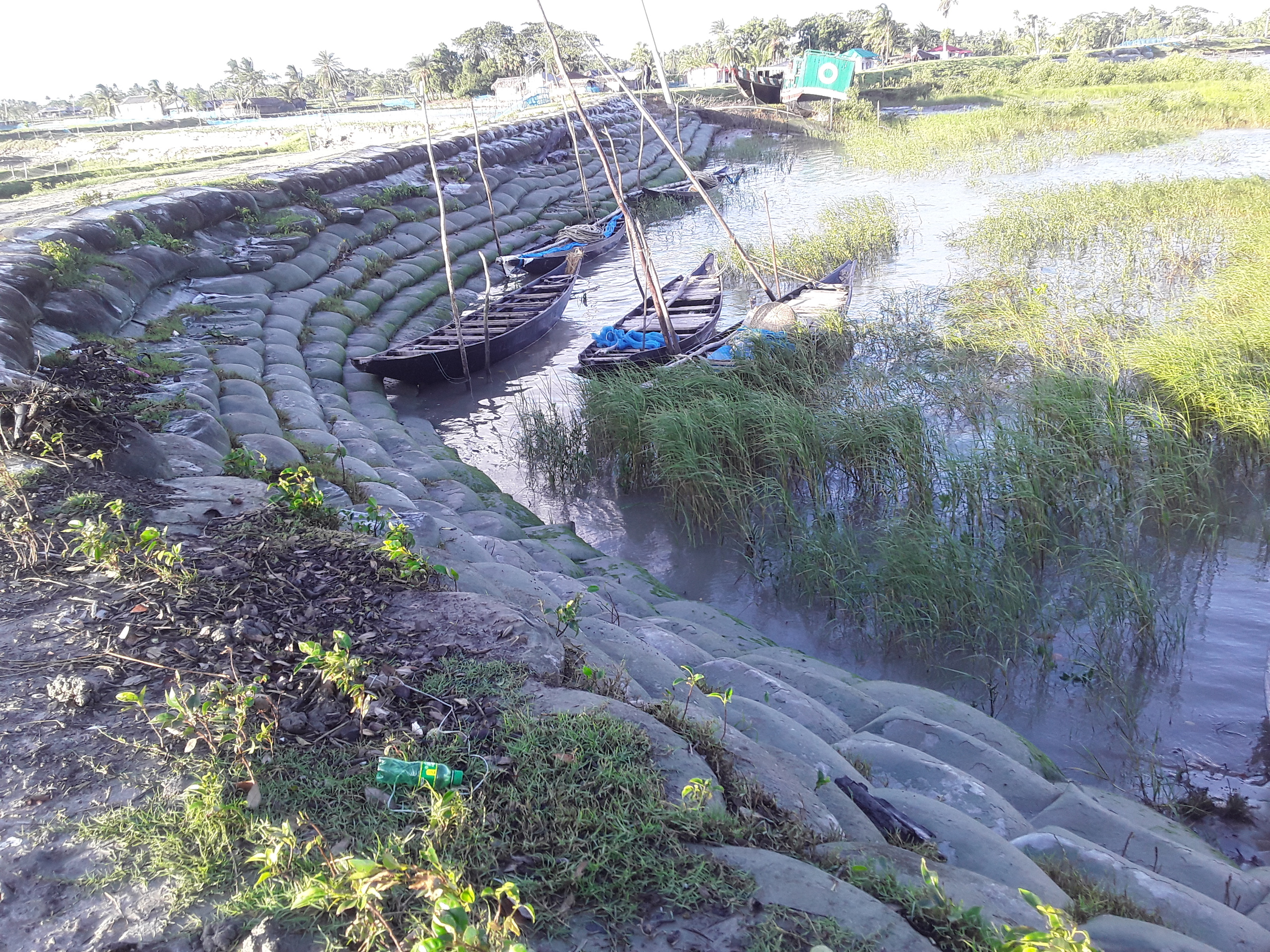
Ainun Nishat, professor emeritus at the Centre for Climate Change and Environmental Research at BRAC University in Dhaka and doyen of water experts in Bangladesh, told The Third Pole: “Our coastal areas can’t be saved without embankments. But embankments can’t be raised very high. You have to let some seawater come into the coastal zone while keeping the embankments intact. Mangrove plantations should be expanded for this.”
“Where there is an opportunity, you can break down embankments to let silt into the area behind them and raise the soil level. This is called tidal river management, which is an effective adaptation technique [to deal with climate change impacts],” Nishat added.
However, while it is good to increase mangrove planting, Sunanda Bandyopadhyay, who teaches geography at the University of Calcutta in India, warns that mangroves alone cannot keep floodwaters out, especially when levels are high during cyclones.
The consensus: embankments and mangroves need to work together to save coastal Bangladesh from the impacts of climate change.
